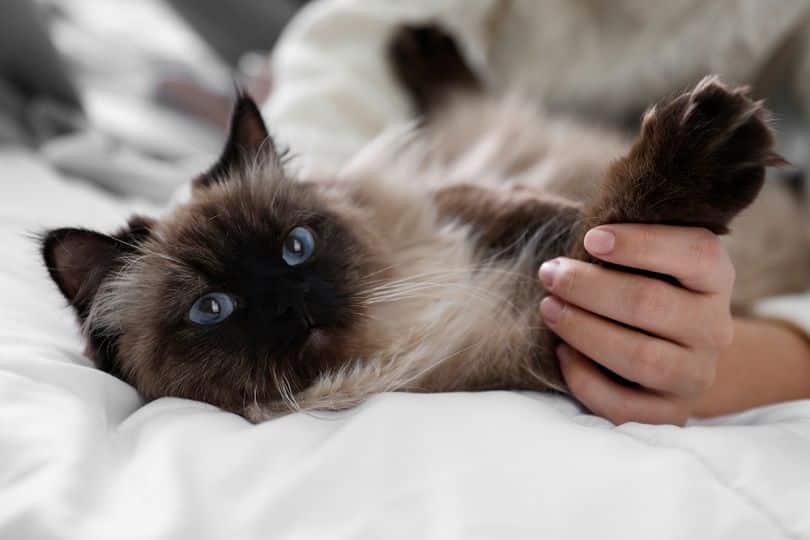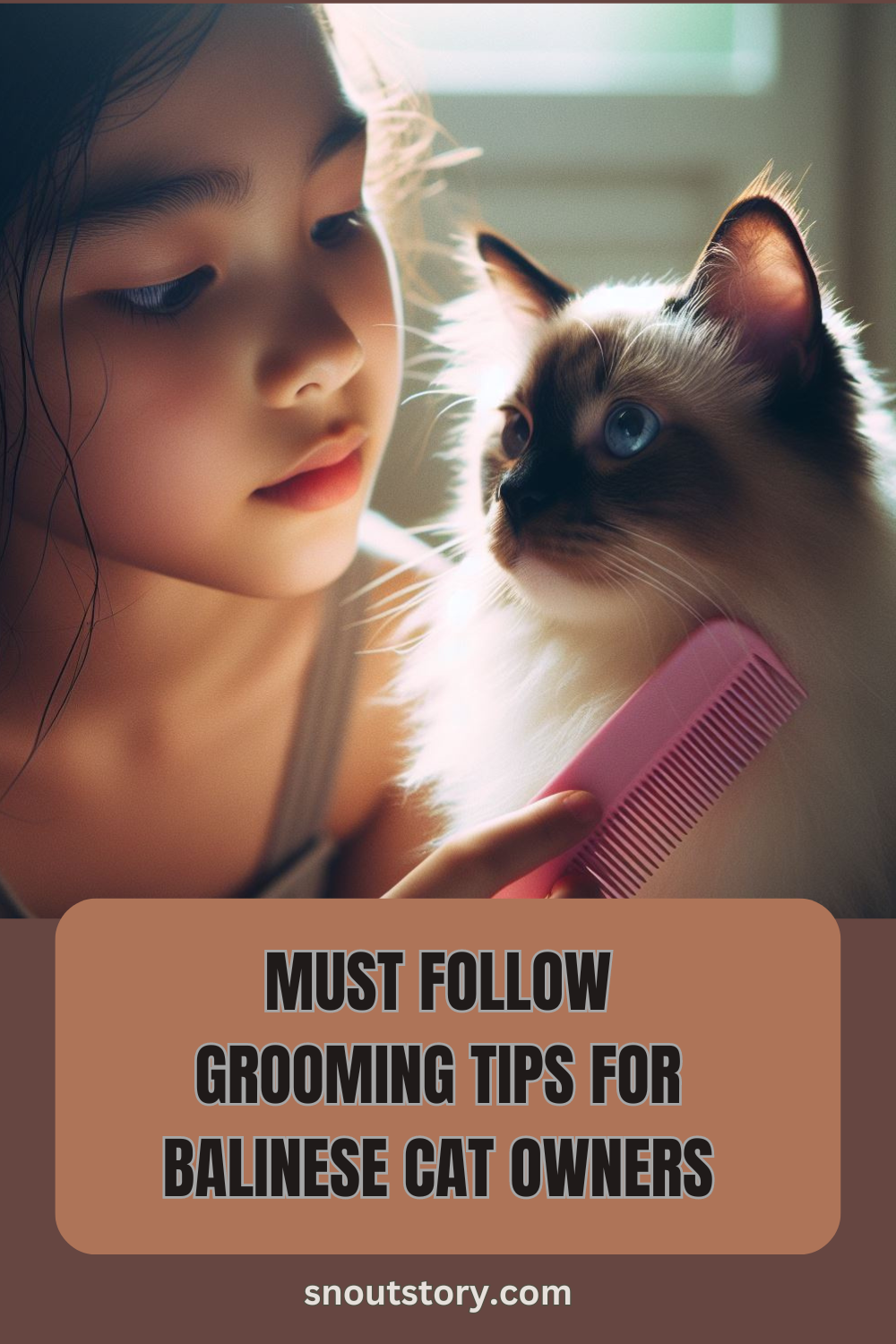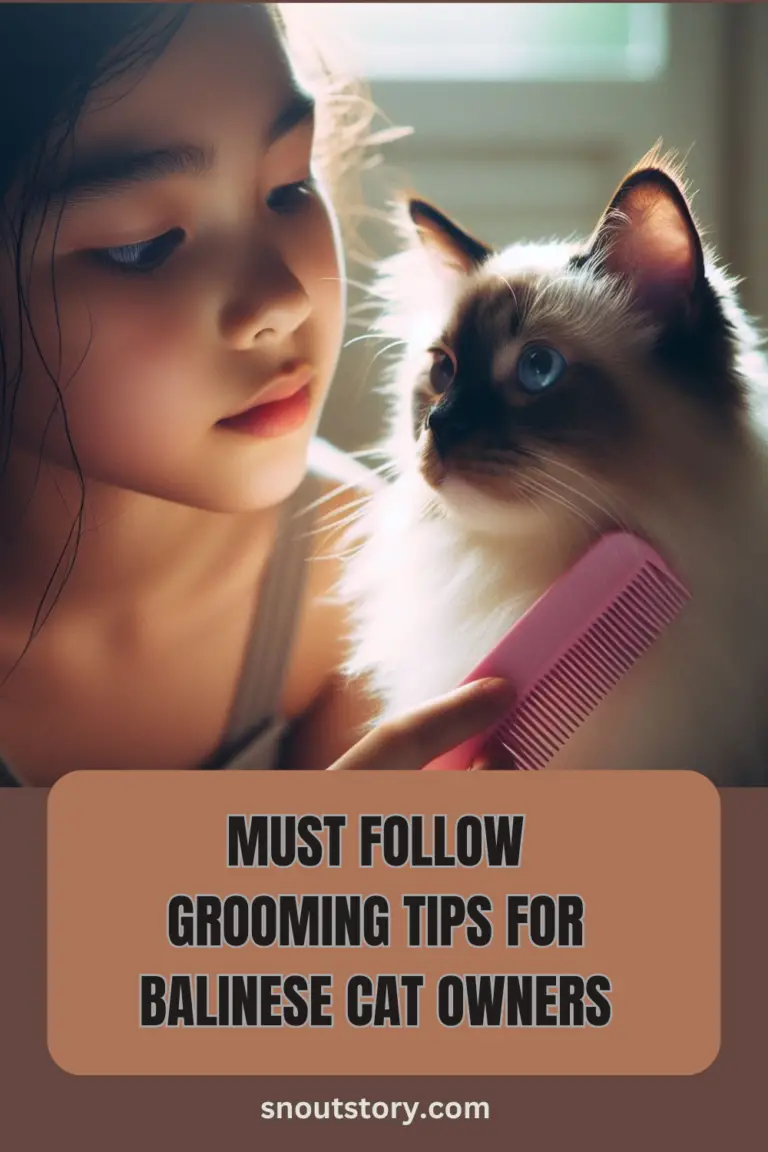Welcome to our guide on essential grooming tips for Balinese cats! Balinese cats are known for their stunning, silky coats and elegant appearance. To maintain their beauty and overall health, proper grooming is essential.
In this comprehensive guide, we will cover everything you need to know to keep your Balinese cat looking and feeling its best. From coat care and brushing techniques to nail trimming and dental hygiene, we’ll provide practical advice and expert tips to make grooming a breeze for both you and your feline companion.
Whether you’re a seasoned cat owner or new to Balinese cats, this guide will help you establish a grooming routine that promotes your cat’s well-being and enhances your bond together.
Coat Care: Tips for maintaining the Balinese’s long and silky coat
Maintaining the long and silky coat of a Balinese cat requires regular grooming and attention to detail. To keep their coat in top condition, start by brushing them at least once or twice a week using a soft-bristled brush or a grooming comb. This helps remove loose fur and prevents matting, especially in areas prone to tangling such as behind the ears and under the legs.
Additionally, consider using a conditioning spray or a small amount of leave-in conditioner to keep their fur soft and manageable. Baths are typically not necessary for Balinese cats unless they get exceptionally dirty, but if you do bathe them, be sure to use a gentle cat shampoo and thoroughly rinse their coat to avoid leaving behind any residue.
Finally, keep an eye out for any signs of skin irritation or parasites while grooming, and consult with a veterinarian if you notice any unusual changes in your cat’s coat or skin health. By following these simple coat care tips, you can help your Balinese cat maintain its beautiful appearance and overall well-being.
Brushing Techniques: Effective methods for brushing to prevent mats and tangles
Brushing your pet cat, particularly a Balinese, requires a gentle touch and the right techniques to prevent mats and tangles. Begin by using a soft-bristled brush or a grooming comb, starting from the head and working your way down to the tail. Be sure to brush in the direction of the fur growth to avoid discomfort or pulling.
Pay special attention to areas prone to tangling, such as behind the ears and under the legs, by gently teasing out any knots with your fingers before using the brush. Take your time and be patient, offering plenty of praise and treats to keep your cat relaxed and cooperative during the grooming session.
Remember, regular brushing not only helps maintain your cat’s coat health but also strengthens the bond between you and your furry friend.
Bathing Guidelines: How often to bathe Balinese cats and recommended products

Bathing your Balinese cat is an important aspect of their grooming routine, but it’s essential to do it with care and consideration for their sensitive skin. Unlike some breeds, Balinese cats typically don’t require frequent baths due to their naturally clean habits and low oil production.
However, occasional baths may be necessary, especially if your cat gets into something dirty or develops skin issues. Aim to bathe your Balinese only when necessary, using a gentle cat shampoo specifically formulated for their delicate skin. Before bathing, be sure to brush out any mats or tangles to prevent them from worsening during the washing process.
During the bath, keep the water lukewarm and use a calm and reassuring tone to help keep your cat relaxed. After rinsing thoroughly, dry your Balinese with a towel and reward them with treats and affection for their cooperation. Remember, less is often more when it comes to bathing your Balinese cat.
Nail Trimming: Proper nail trimming techniques and frequency to avoid discomfort
Proper nail trimming is essential for the health and comfort of your Balinese cat. While Balinese cats are typically less prone to scratching furniture due to their gentle nature, regular nail maintenance is still important to prevent overgrowth and potential discomfort.
Aim to trim your Balinese cat’s nails every 2-4 weeks, depending on their activity level and how quickly their nails grow. Use sharp, high-quality cat nail clippers to make clean cuts, avoiding the quick – the pink area inside the nail that contains blood vessels and nerves. If you’re unsure about how to trim your cat’s nails safely, consider consulting with your veterinarian or a professional groomer for guidance.
Additionally, provide your cat with appropriate scratching posts and toys to help them naturally wear down their nails and satisfy their scratching instincts. By keeping up with regular nail trims, you can help ensure your Balinese cat stays comfortable and happy.
Ear Cleaning: Importance of regular ear cleaning and safe methods to prevent infections
Regular ear cleaning is crucial for maintaining the health and well-being of your Balinese cat. While Balinese cats generally have fewer ear issues compared to other breeds, routine cleaning helps prevent the buildup of dirt, wax, and debris that can lead to infections and discomfort.
Use a gentle, veterinarian-approved ear cleaner and soft cotton balls or pads to clean the outer ear area, avoiding the ear canal to prevent injury. Gently wipe away any visible dirt or wax, being careful not to insert anything into the ear canal.
If you notice signs of irritation, redness, or a foul odor, consult with your veterinarian for further evaluation and treatment. By incorporating regular ear cleaning into your Balinese cat’s grooming routine, you can help keep their ears clean and healthy, promoting overall well-being and happiness.
Dental Care: Tips for maintaining good dental hygiene in Balinese cats

Maintaining good dental hygiene is essential for the overall health and well-being of Balinese cats. Just like humans, cats can suffer from dental issues such as plaque buildup, gum disease, and tooth decay if proper care is not taken.
To promote good dental health in your Balinese cat, provide them with regular dental check-ups by a veterinarian, and incorporate dental care into their daily routine. This includes brushing their teeth with a feline-specific toothbrush and toothpaste, offering dental treats or toys designed to help clean teeth, and ensuring they have a balanced diet that supports dental health. By prioritizing dental care, you can help prevent dental problems and ensure your Balinese cat enjoys a healthy and happy life.
Eye Care: How to keep the eyes clean and prevent tear staining
Keeping your Balinese cat’s eyes clean is crucial for their health and comfort. To prevent tear staining and maintain overall eye health, gently wipe away any discharge or debris from the corners of their eyes using a clean, damp cloth or cotton ball.
Be careful not to touch the eyeball itself and avoid using harsh chemicals or products near their eyes. Additionally, ensure your cat’s environment is free from potential irritants such as dust or smoke, as these can exacerbate eye issues.
Regular veterinary check-ups can also help detect any underlying eye problems early on, allowing for prompt treatment and prevention of further complications. By incorporating these simple practices into your cat’s grooming routine, you can help keep their eyes clean and healthy.
Tail Maintenance: Keeping the Balinese cat’s tail clean and free from knots
Keeping your Balinese cat’s tail clean and free from knots is essential for their overall hygiene and comfort. Regular brushing with a soft-bristled brush or comb can help remove loose fur and prevent mats from forming in their tail.
Pay close attention to the base of the tail where fur tends to tangle more easily. If you notice any knots or mats, gently work them out with your fingers or a detangling spray to avoid causing discomfort to your cat. Additionally, keep their tail area clean by wiping it with a damp cloth if necessary, especially after they use the litter box.
By incorporating these simple grooming practices into your routine, you can ensure that your Balinese cat’s tail remains clean, knot-free, and healthy.
Handling Shedding: Strategies for managing shedding in Balinese cats
Managing shedding in Balinese cats can be a manageable task with the right strategies. Regular grooming sessions using a suitable brush can help remove loose fur and reduce the amount of hair shed around your home.
Additionally, providing your Balinese cat with a balanced diet rich in essential nutrients can promote healthy skin and coat, minimizing excessive shedding. Consider using omega-3 fatty acid supplements into their diet, as these can help improve the condition of their skin and reduce shedding.
Maintaining a clean environment by vacuuming regularly and using lint rollers on furniture can also help minimize the impact of shedding on your home. By implementing these strategies, you can effectively manage shedding in your Balinese cat and keep your living space clean and fur-free.
Professional Grooming: When to seek professional grooming assistance and what to expect
Knowing when to seek professional grooming assistance for your Balinese cat is essential for maintaining their health and appearance. While regular grooming at home is beneficial, there are instances where professional grooming may be necessary.
If your Balinese cat has particularly dense fur or is prone to matting, professional grooming can ensure thorough and effective care. Additionally, if you notice any skin issues or abnormalities during grooming sessions, it’s best to consult a professional groomer or veterinarian for further examination.
When you take your Balinese cat to a professional groomer, you can expect them to provide a range of services tailored to your cat’s needs, including bathing, brushing, nail trimming, and ear cleaning. Professional groomers have the expertise and specialized equipment to handle grooming tasks safely and efficiently, ensuring your Balinese cat looks and feels their best.
Recommended
How To Choose The Right Cat Litter? Things To Consider
Balinese Cat: Nutrition and Diet – (Everything A New Owner Should Know)
Balinese Cat Temperament And Behaviour – Everything a New Owner Should Know
Balinese Cat Wellness and Health Issues – Everything a New Owner Must Know
Essential Grooming Tips for Balinese Cat – Everything a New Owner Must Know
Everything About The Balinese Cat (Long Haired Siamese Cat) A Complete Breed Guide

Vedant Narvekar is an experienced digital marketing expert with a profound love for nature and animals. With a career rooted in leveraging online platforms to drive engagement and promote meaningful causes, Vedant’s passion for animals inspired him to start Snout Story—a blog dedicated to educating people about pet keeping and sharing proper knowledge about caring for animals. Drawing on his expertise in digital marketing, Vedant utilizes his platform to advocate for responsible pet ownership, providing valuable insights on pet care, training, nutrition, and more. Through Snout Story, Vedant aims to empower pet lovers with the information they need to provide the best possible care for their furry companions, while also fostering a deeper appreciation for the natural world and the creatures that inhabit it.







